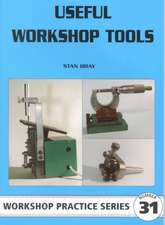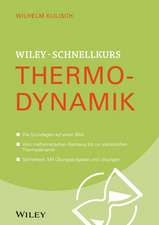Juvenile Wood in Forest Trees: Springer Series in Wood Science
Autor Bruce J. Zobel, Jerry R. Spragueen Limba Engleză Paperback – 10 dec 2011
Din seria Springer Series in Wood Science
- 18%
 Preț: 1543.84 lei
Preț: 1543.84 lei - 23%
 Preț: 2062.71 lei
Preț: 2062.71 lei - 18%
 Preț: 1824.32 lei
Preț: 1824.32 lei - 18%
 Preț: 2093.60 lei
Preț: 2093.60 lei - 24%
 Preț: 817.70 lei
Preț: 817.70 lei - 18%
 Preț: 1225.16 lei
Preț: 1225.16 lei - 18%
 Preț: 3288.92 lei
Preț: 3288.92 lei - 18%
 Preț: 948.29 lei
Preț: 948.29 lei - 18%
 Preț: 1222.31 lei
Preț: 1222.31 lei - 18%
 Preț: 946.87 lei
Preț: 946.87 lei - 15%
 Preț: 643.34 lei
Preț: 643.34 lei - 18%
 Preț: 1122.87 lei
Preț: 1122.87 lei - 18%
 Preț: 1020.30 lei
Preț: 1020.30 lei - 24%
 Preț: 836.40 lei
Preț: 836.40 lei - 20%
 Preț: 569.47 lei
Preț: 569.47 lei - 15%
 Preț: 638.89 lei
Preț: 638.89 lei - 15%
 Preț: 636.30 lei
Preț: 636.30 lei - 15%
 Preț: 635.31 lei
Preț: 635.31 lei - 18%
 Preț: 878.05 lei
Preț: 878.05 lei - 15%
 Preț: 646.43 lei
Preț: 646.43 lei - 18%
 Preț: 1004.67 lei
Preț: 1004.67 lei - 18%
 Preț: 894.03 lei
Preț: 894.03 lei - 15%
 Preț: 658.70 lei
Preț: 658.70 lei - 18%
 Preț: 950.84 lei
Preț: 950.84 lei - 18%
 Preț: 783.35 lei
Preț: 783.35 lei - 15%
 Preț: 645.79 lei
Preț: 645.79 lei - 24%
 Preț: 880.78 lei
Preț: 880.78 lei -
 Preț: 388.13 lei
Preț: 388.13 lei - 18%
 Preț: 780.82 lei
Preț: 780.82 lei - 18%
 Preț: 891.65 lei
Preț: 891.65 lei
Preț: 641.53 lei
Preț vechi: 754.74 lei
-15% Nou
Puncte Express: 962
Preț estimativ în valută:
122.75€ • 128.17$ • 101.60£
122.75€ • 128.17$ • 101.60£
Carte tipărită la comandă
Livrare economică 05-19 aprilie
Preluare comenzi: 021 569.72.76
Specificații
ISBN-13: 9783642721281
ISBN-10: 3642721281
Pagini: 320
Ilustrații: XV, 304 p.
Dimensiuni: 155 x 235 x 17 mm
Greutate: 0.45 kg
Ediția:Softcover reprint of the original 1st ed. 1998
Editura: Springer Berlin, Heidelberg
Colecția Springer
Seria Springer Series in Wood Science
Locul publicării:Berlin, Heidelberg, Germany
ISBN-10: 3642721281
Pagini: 320
Ilustrații: XV, 304 p.
Dimensiuni: 155 x 235 x 17 mm
Greutate: 0.45 kg
Ediția:Softcover reprint of the original 1st ed. 1998
Editura: Springer Berlin, Heidelberg
Colecția Springer
Seria Springer Series in Wood Science
Locul publicării:Berlin, Heidelberg, Germany
Public țintă
ResearchCuprins
1 General Concepts of Juvenile Wood.- 1.1 General Concepts.- 1.2 What Is Juvenile Wood?.- 1.3 The Causes of Juvenile Wood.- 1.4 Importance and Characteristics of Juvenile Wood.- 1.5 Literature on Juvenile Wood.- 1.6 Summary.- 2 Characteristics of Juvenile Wood.- 2.1 General Concepts.- 2.2 Juvenile Compared with Mature Wood.- 2.3 Characteristics of Conifers.- 2.4 Characteristics of Hardwoods.- 2.5 Summary.- 3 Occurrence of Juvenile Wood.- 3.1 General Concepts.- 3.2 Where Does Juvenile Wood Occur?.- 3.3 Radial Development in the Conifers.- 3.4 Radial Development in the Hardwoods.- 3.5 Development with Tree Height.- 3.6 Summary.- 4 Characteristics Affecting Juvenile Wood.- 4.1 Relationship to Reaction Wood.- 4.2 Genetics of Juvenile Wood.- 4.3 Relationship to Growth Rate.- 4.4 General Sampling Methods for Different Characteristics.- 4.5 Summary.- 5 Changing Juvenile Wood.- 5.1 General Concepts.- 5.2 Response to Genetic Manipulation.- 5.3 Response to Silvicultural Treatments.- 5.4 Response to Geographic Location, Seed Source and Species.- 5.5 Response to Other Environmental Factors.- 5.6 Summary.- 6 Predictions of Mature and Total Tree Wood Properties From Juvenile Wood.- 6.1 General Concepts.- 6.2 Juvenile to Mature Wood Correlations.- 6.3 Summary.- 7 The Importance of Juvenile Wood.- 7.1 General Concepts.- 7.2 In Conifers.- 7.3 In Hardwoods.- 7.4 Summary.- 8 Use of Juvenile Wood.- 8.1 General Concepts.- 8.2 Juvenile Wood for Pulp and Paper.- 8.3 Juvenile Wood for Solid Wood Products.- 8.4 Future Juvenile Wood Supplies and Utilization.- 8.5 Summary.- 9 Unusual Wood Properties Near the Tree Center.- 9.1 General Concepts.- 9.2 Heartwood.- 9.3 Growth Stresses.- 9.4 Summary.- References.- Species Index.
Caracteristici
A summary of knowledge about juvenile wood - both scientific and applied A good summary of each chapter is given Simply and understandably presented








